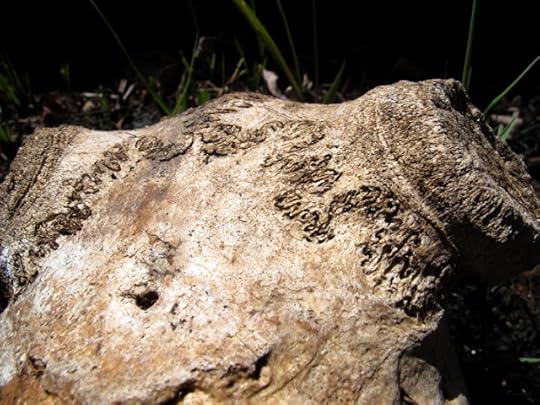Ariel Gordon's Blog, page 50
May 23, 2013
Poetry with Perks
Featuring Ariel Gordon, dee Hobsbawn-Smith, Andréa Ledding + Jeanette Lynes
When: Monday, June 10, 7:30 pm
Where: City Perks (801 7 Ave North, Saskatoon)
Cost: Free!
Please join us for the perkiest of poetry readings, featuring three of Saskatoon’s plummiest writers and a Winnipeg poet with a letterpress chapbook to launch.
* * *

Jeanette Lynes is the author of six collections of poetry and one novel. She is also co-author, with Alison Calder, of a chapbook published by Jack Pine Press. Jeanette is Co-ordinator of the MFA in Writing at the University of Saskatchewan.
Andréa Ledding is a Saskatoon-based writer, reader, mother, and photo-journalist. Recent awards include 2012 John V. Hicks Long Manuscript for poetry, 2011 John V. Hicks Long Manuscript for CNF, and subTerrain's 2010 Lush Triumphant for poetry, along with inclusion in the 2011 "Best Canadian Poetry" anthology (Tightrope Press). Her play "Dominion" opened up the 25th annual Weesageechak Festival in Toronto this past November, and she is currently working on her master's thesis.
dee Hobsbawn-Smith is a poet, writer, journalist, chef, educator and local foods advocate. Her award-winning journalism, poetry and short fiction has appeared in books, newspapers, magazines, anthologies and literary journals in Canada, the USA and elsewhere. After 27 years in Calgary, dee now lives in her family’s 100-year-old farmhouse west of Saskatoon. She is currently earning her MFA in writing at the University of Saskatchewan. Dee’s sixth book and first collection of poetry, Wildness Rushing In, will be published by Hagios Press in 2014, and her first collection of short fiction, Appetites, will be published in 2014 by Thistledown Press.
Ariel Gordon is a Winnipeg writer. Her first book of poetry, Hump (Palimpsest Press), was published in 2010, and her second is slated for publication in 2014. Most recently, she won Kalamalka Press' inaugural John Lent Poetry-Prose Award. The resulting letterpress chapbook, How to Make a Collage, will be launched at this reading. When not being bookish, Ariel likes tromping through the woods and taking macro photographs of mushrooms.
When: Monday, June 10, 7:30 pm
Where: City Perks (801 7 Ave North, Saskatoon)
Cost: Free!
Please join us for the perkiest of poetry readings, featuring three of Saskatoon’s plummiest writers and a Winnipeg poet with a letterpress chapbook to launch.
* * *

Jeanette Lynes is the author of six collections of poetry and one novel. She is also co-author, with Alison Calder, of a chapbook published by Jack Pine Press. Jeanette is Co-ordinator of the MFA in Writing at the University of Saskatchewan.
Andréa Ledding is a Saskatoon-based writer, reader, mother, and photo-journalist. Recent awards include 2012 John V. Hicks Long Manuscript for poetry, 2011 John V. Hicks Long Manuscript for CNF, and subTerrain's 2010 Lush Triumphant for poetry, along with inclusion in the 2011 "Best Canadian Poetry" anthology (Tightrope Press). Her play "Dominion" opened up the 25th annual Weesageechak Festival in Toronto this past November, and she is currently working on her master's thesis.
dee Hobsbawn-Smith is a poet, writer, journalist, chef, educator and local foods advocate. Her award-winning journalism, poetry and short fiction has appeared in books, newspapers, magazines, anthologies and literary journals in Canada, the USA and elsewhere. After 27 years in Calgary, dee now lives in her family’s 100-year-old farmhouse west of Saskatoon. She is currently earning her MFA in writing at the University of Saskatchewan. Dee’s sixth book and first collection of poetry, Wildness Rushing In, will be published by Hagios Press in 2014, and her first collection of short fiction, Appetites, will be published in 2014 by Thistledown Press.
Ariel Gordon is a Winnipeg writer. Her first book of poetry, Hump (Palimpsest Press), was published in 2010, and her second is slated for publication in 2014. Most recently, she won Kalamalka Press' inaugural John Lent Poetry-Prose Award. The resulting letterpress chapbook, How to Make a Collage, will be launched at this reading. When not being bookish, Ariel likes tromping through the woods and taking macro photographs of mushrooms.
Published on May 23, 2013 09:28
May 22, 2013
Poetry-as-saviour
So I won the Literary Press Group's National Poetry Month contest, which meant that 35 books of poetry arrived on my doorstep this week. (!)
I had a good rummage amidst the titles yesterday. Pulled out the ones I already had and made piles of the ones I didn't have. Ones I'm interested in/ones I'm less interested in. You know.
Anyways, here is the first to-read pile. You'll note all the titles are land/forest-y. That's just where I am right now...
The Deer Yard by Cooper & Thurston (Gaspereau Press, 2013)
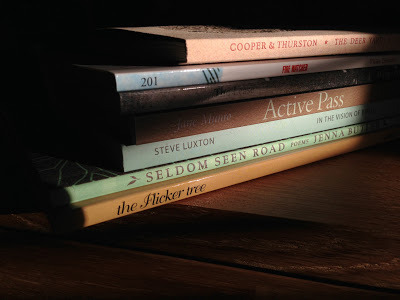 Fire Watcher by Vivian Demuth (Guernica Editions, 2013)
Fire Watcher by Vivian Demuth (Guernica Editions, 2013)
The Lease by Mathew Henderson (Coach House, 2012)
Active Pass by Jane Munro (Pedlar Press, 2010)
In the Vision of Birds: New and Selected Poems by Steve Luxton (DC Books, 2012)
Seldom Seen Road by Jenna Butler (NeWest Press, 2013)
The Flicker Tree: Okanagan Poems by Nancy Homes (Ronsdale Press, 2012)
In related news, I brought a couple of the books I already had to my writing group meeting on Tuesday. I gave Marita Dachsel's Glossolalia to Kerry Ryan and Clea Roberts' Here is Where we Disembark to Alison Calder.
Alison was so pleased, she gifted me with a pair of stripy wool socks she'd knitted. And what's more, colourway of the sock wool she'd made them from was named Winnipeg. Which is just about perfect. (Apparently, her husband Warren doesn't like wool socks. To which I say: ????????)
Who says poetry can't save the world?
(Okay, she had brought them because they were too big for her. And I have MASSIVE feet. But I prefer my poetry-as-saviour model...)
(I really love the term "colourway.")
I had a good rummage amidst the titles yesterday. Pulled out the ones I already had and made piles of the ones I didn't have. Ones I'm interested in/ones I'm less interested in. You know.
Anyways, here is the first to-read pile. You'll note all the titles are land/forest-y. That's just where I am right now...
The Deer Yard by Cooper & Thurston (Gaspereau Press, 2013)
 Fire Watcher by Vivian Demuth (Guernica Editions, 2013)
Fire Watcher by Vivian Demuth (Guernica Editions, 2013)The Lease by Mathew Henderson (Coach House, 2012)
Active Pass by Jane Munro (Pedlar Press, 2010)
In the Vision of Birds: New and Selected Poems by Steve Luxton (DC Books, 2012)
Seldom Seen Road by Jenna Butler (NeWest Press, 2013)
The Flicker Tree: Okanagan Poems by Nancy Homes (Ronsdale Press, 2012)
In related news, I brought a couple of the books I already had to my writing group meeting on Tuesday. I gave Marita Dachsel's Glossolalia to Kerry Ryan and Clea Roberts' Here is Where we Disembark to Alison Calder.
Alison was so pleased, she gifted me with a pair of stripy wool socks she'd knitted. And what's more, colourway of the sock wool she'd made them from was named Winnipeg. Which is just about perfect. (Apparently, her husband Warren doesn't like wool socks. To which I say: ????????)
Who says poetry can't save the world?
(Okay, she had brought them because they were too big for her. And I have MASSIVE feet. But I prefer my poetry-as-saviour model...)
(I really love the term "colourway.")
Published on May 22, 2013 20:19
May 16, 2013
skullduggery
Published on May 16, 2013 22:36
first growth
Published on May 16, 2013 22:28
burn zone

* * *
All photos Assiniboine Forest, Winnipeg, MB. May 12, 2013.
* * *
I have a cold whose worst symptom is fatigue, so I've been napping a fair bit the past week or so. But this past Sunday, M was working, so I took the girl for a walk in the forest.
We did what M and I normally call the loop, which normally takes about an hour when I'm walking with him. It's our quick-and- dirty, don't-have-much-time walk.
(And it was lovely. I didn't have to chase her through the forest, telling her that it was GOOD for HER. I didn't have to threaten/cajole/distract her. She just walked and looked at things and, once, very quietly, asked if we were almost finished our walk...)
The site of a Keystone plane crash in 2006 is just off the loop. The trees knocked down by the crash had burned just enough to turn them into iron. Which is to say that they hadn't decomposed much in thirteen years but there would usually be a few mushrooms by this time of year. And there was one log that had a colony of slow-growing lichen on it that I would check every few months.
There was a fire there this past fall...and I wanted to have a look at what was left.
As we walked through the clearing, I noted that grass had begun to emerge from the ground. I saw that many of the logs had been burned through. (Anna dubbed it 'the burn zone' and said it smelled.)
I'm sort-of kind-of looking forward to seeing what grows there next.
Published on May 16, 2013 22:27
May 14, 2013
Vancouver reading!
Call & Response: Three Poets in Conversation
When: Saturday, June 8, 7:30 pm
Where: People's Co-op Books, 1391 Commercial Drive
Cost: Free! Light refreshments provided!
Poets build community at places like the Sage Hill Writing Experience and the Banff Centre. But also long distance, via postcard and email, from first draft to launch party.
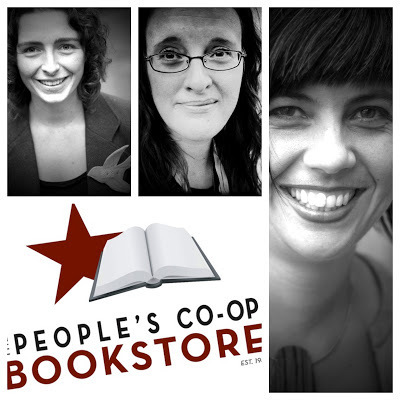 Please join award-winning poets Anna Swanson and Bren Simmers as they welcome Winnipeg’s Ariel Gordon to the city...for a reading that echoes all their conversations over the years.
Please join award-winning poets Anna Swanson and Bren Simmers as they welcome Winnipeg’s Ariel Gordon to the city...for a reading that echoes all their conversations over the years.* * *
Ariel Gordon is a Winnipeg writer. Her first book of poetry, Hump (Palimpsest Press), was published in 2010, and her second is slated for publication in 2014. Most recently, she won Kalamalka Press' inaugural John Lent Poetry-Prose Award. The resulting letterpress chapbook, How to Make a Collage, will be launched at this reading. When not being bookish, Ariel likes tromping through the woods and taking macro photographs of mushrooms.
Bren Simmers has worked in libraries, fire lookouts, and as a park interpreter. Winner of the Arc Poem of the Year Award, and finalist for the Bronwen Wallace Memorial Award and The Malahat Review Long Poem Prize, her first book of poems, Night Gears, was published by Wolsak and Wynn in 2010. She is currently working on a book about her East Vancouver neighbourhood.
Anna Swanson is a poet and children’s librarian living in Vancouver, BC. Her debut book of poetry, The Nights Also (Tightrope, 2010), asks how identity is formed and challenged in relation to chronic illness, sexuality and solitude. It won a Lambda Literary Award and the Gerald Lampert Award for best first book of poetry.
Published on May 14, 2013 14:06
May 13, 2013
exquisite corpse-ing
So Darryl Joel Berger and I have added another layer to our on-going collaboration, this time an exquisite corpse with zombie apocalypse overtones.
Here are the first two limbs:
listen to ‘My fingers hurt’ on Audioboo
Which is not to say that there WILL be zombies. But it does seem a little end-times-y...
Here are the first two limbs:
listen to ‘My fingers hurt’ on Audioboo
Which is not to say that there WILL be zombies. But it does seem a little end-times-y...
Published on May 13, 2013 15:10
May 11, 2013
urban/forest reading
So I'm on an urban/nature reading kick these days in service of my non-fiction essays on urban forests, specifically around Winnipeg's Assiniboine Forest.
I've been working my way through the following titles and thought you might be interested too...
Feral: Rewilding the Land, the Sea, and Human Life by George Monbiot (Penguin Canada, 2013).
I'm reviewing this title for the Winnipeg Free Press. And while I am not completely convinced by its manly bluster, there are some interesting ideas at play here...
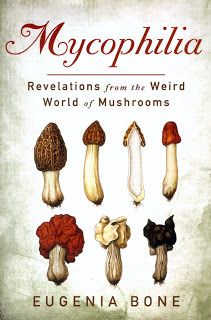 Gardens Aflame: Garry Oak Meadows of BC's South Coast by Maleea Acker (New Star Books, 2012)
Gardens Aflame: Garry Oak Meadows of BC's South Coast by Maleea Acker (New Star Books, 2012)
It's been very interesting reading this book against Feral, given that Monbiot calls for re-wilding instead of conservation. It's been very interesting reading this book about a particular environment, given my own preoccupation with a particular environment. (I'll be interviewing Maleea for the Jane Day Reader over the coming weeks...)
Mycophilia: Revelations from the Weird World of Mushrooms by Eugenia Bone (Rodale, 2011).
I stumbled across this title in the field guide section of McNally's and gasped audibly. GASP! But its concentration on cash crops such as matsutake, morels, and truffles so far is disappointing.
City Wilds: Essays and Stories About Urban Nature edited by Terrell F. Dixon (University of Georgia Press, 2002)
Vancouver park interpreter/poet Bren Simmers recommended this one. Michael Aaron Rockland's essay about canoeing around Manhattan provoked a fit of giggles. (To clarify: a good giggle-fit.)
Landscape and Memory by Simon Schama (Random House, 1995)
My UMP colleague David Carr loaned me this title from his collection.
I also pillaged the U of M library system and came up with the following titles, which I plan to similarly pillage for both data and language:
The Relative Abundance of Songbirds and Small Mammals in Assiniboine Forest by C. Cuthbert and W.H. Koonz (Manitoba Department of Renewable Resources and Transportation Services, 1976)
Assiniboine Forest: An Urban Wilderness Park (Parks and Protection Division, City of Winnipeg, 1974)
Inventory, Analysis and Management of the Assiniboine Forest Urban Nature Area by Tom Ruta (MA Thesis, Natural Resources Institute, 1981).
Resident Opinions Concerning Deer Management in the Greater Winnipeg Area, Manitoba, Canada by Erin McCance (MA Thesis, Dept. of Environment and Geography, 2009)
I'm also working my way through two course packs given to me by the U of Wpg's Richard Westwood, used in his Urban Forestry and Forest Policy and Management courses.
So, dear readers, can you recommend any other urban/nature titles you think I should consider?
I've been working my way through the following titles and thought you might be interested too...
Feral: Rewilding the Land, the Sea, and Human Life by George Monbiot (Penguin Canada, 2013).
I'm reviewing this title for the Winnipeg Free Press. And while I am not completely convinced by its manly bluster, there are some interesting ideas at play here...
 Gardens Aflame: Garry Oak Meadows of BC's South Coast by Maleea Acker (New Star Books, 2012)
Gardens Aflame: Garry Oak Meadows of BC's South Coast by Maleea Acker (New Star Books, 2012)It's been very interesting reading this book against Feral, given that Monbiot calls for re-wilding instead of conservation. It's been very interesting reading this book about a particular environment, given my own preoccupation with a particular environment. (I'll be interviewing Maleea for the Jane Day Reader over the coming weeks...)
Mycophilia: Revelations from the Weird World of Mushrooms by Eugenia Bone (Rodale, 2011).
I stumbled across this title in the field guide section of McNally's and gasped audibly. GASP! But its concentration on cash crops such as matsutake, morels, and truffles so far is disappointing.
City Wilds: Essays and Stories About Urban Nature edited by Terrell F. Dixon (University of Georgia Press, 2002)
Vancouver park interpreter/poet Bren Simmers recommended this one. Michael Aaron Rockland's essay about canoeing around Manhattan provoked a fit of giggles. (To clarify: a good giggle-fit.)
Landscape and Memory by Simon Schama (Random House, 1995)
My UMP colleague David Carr loaned me this title from his collection.
I also pillaged the U of M library system and came up with the following titles, which I plan to similarly pillage for both data and language:
The Relative Abundance of Songbirds and Small Mammals in Assiniboine Forest by C. Cuthbert and W.H. Koonz (Manitoba Department of Renewable Resources and Transportation Services, 1976)
Assiniboine Forest: An Urban Wilderness Park (Parks and Protection Division, City of Winnipeg, 1974)
Inventory, Analysis and Management of the Assiniboine Forest Urban Nature Area by Tom Ruta (MA Thesis, Natural Resources Institute, 1981).
Resident Opinions Concerning Deer Management in the Greater Winnipeg Area, Manitoba, Canada by Erin McCance (MA Thesis, Dept. of Environment and Geography, 2009)
I'm also working my way through two course packs given to me by the U of Wpg's Richard Westwood, used in his Urban Forestry and Forest Policy and Management courses.
So, dear readers, can you recommend any other urban/nature titles you think I should consider?
Published on May 11, 2013 07:54
May 9, 2013
Planet Earth Poetry!
Congress @ Planet Earth
Friday, June 7 2013, 7:30 p.m.
Planet Earth Poetry Reading Series
Moka House, #103, 1633 Hillside Ave.
$3 (after open mic)
Writers attending Congress 2013, showcase your work at Planet Earth Poetry's June 7th open mic. Poets, fictionists, and creative nonfiction practitioners are equally welcome.
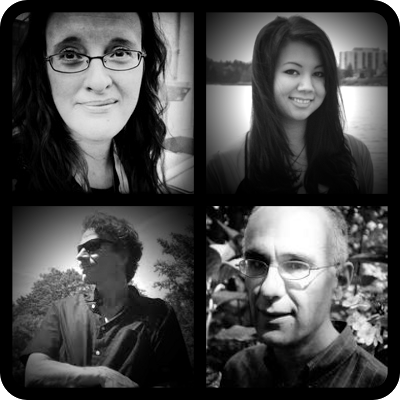 Sign up for the open mic begins at 7 p.m. Each reader is limited to one piece of three minutes or less. Bring your edgiest bon mots because Congress's theme this year is all things "@ The Edge."
Sign up for the open mic begins at 7 p.m. Each reader is limited to one piece of three minutes or less. Bring your edgiest bon mots because Congress's theme this year is all things "@ The Edge."
The evening's featured readers are Manitoba's Ariel Gordon, Malahat #182 contributor Cody Klippenstein, and Malahat board members Iain Higgins and Eric Miller.
* * *
Ariel Gordon is a Winnipeg writer. Her first book of poetry, Hump (Palimpsest Press, 2010), won the Aqua Books Lansdowne Prize for Poetry, and her second, How to Pack Without Overpacking, is slated for publication in 2014. Most recently, she won Kalamalka Press' inaugural John Lent Poetry-Prose Award. The resulting letterpress chapbook, How to Make a Collage, will be launched at this reading. When not being bookish, Ariel likes tromping through the woods and taking macro photographs of mushrooms.
Cody Klippenstein's fiction has appeared in the Spring 2013 issue (#182) of The Malahat Review, Joyland, The Fiddlehead, and Zoetrope: All-Story as the winner of its 2012 short fiction contest selected by Karen Russell. She currently lives in Victoria, BC, where she is at work on a novel, and will be an MFA candidate at Cornell University this fall.
Iain Higgins is a writer, translator, critic, and teacher. His books include Then Again (poems), The Invention of Poetry (a translation of Polish poet Adam Czerniawski’s selected poems), The Book of John Mandeville (a translation of a fictional medieval travel book about the East), and Writing East: The “Travels”’ of Sir John Mandeville (an academic study). His poems have appeared in Best Canadian Poetry in English 2008 and Rocksalt: An Anthology of Contemporary BC Poetry, and his creative nonfiction has appeared in Maisonneuve. He is currently finishing a new book of poems and working on a novel. He teaches in the English department and in the Medieval Studies Program at UVic.
Eric Miller has published three books of poetry, Song of the Vulgar Starling, In the Scaffolding, which was nominated for the 2006 ReLit ward, and A Day in Moss. His book of lyric essays, The Reservoir, was short-listed for the 2007 Hubert Evans Award. He has published two book-length translations: Bettina Klix's Rapture of the Depths and We Are Like Fire, which collects writings by Wilhelm Waiblinger and Hermann Hesse on Friedrich Hoelderlin. Eric’s work has appeared in The Antigonish Review, Books in Canada, Brick, Canadian Literature, Columbia, Descant, The Fiddlehead, Ploughshares, Queen's Quarterly, and Vallum. He sits on the poetry board of The Malahat Review and teaches English at the University of Victoria.
Friday, June 7 2013, 7:30 p.m.
Planet Earth Poetry Reading Series
Moka House, #103, 1633 Hillside Ave.
$3 (after open mic)
Writers attending Congress 2013, showcase your work at Planet Earth Poetry's June 7th open mic. Poets, fictionists, and creative nonfiction practitioners are equally welcome.
 Sign up for the open mic begins at 7 p.m. Each reader is limited to one piece of three minutes or less. Bring your edgiest bon mots because Congress's theme this year is all things "@ The Edge."
Sign up for the open mic begins at 7 p.m. Each reader is limited to one piece of three minutes or less. Bring your edgiest bon mots because Congress's theme this year is all things "@ The Edge." The evening's featured readers are Manitoba's Ariel Gordon, Malahat #182 contributor Cody Klippenstein, and Malahat board members Iain Higgins and Eric Miller.
* * *
Ariel Gordon is a Winnipeg writer. Her first book of poetry, Hump (Palimpsest Press, 2010), won the Aqua Books Lansdowne Prize for Poetry, and her second, How to Pack Without Overpacking, is slated for publication in 2014. Most recently, she won Kalamalka Press' inaugural John Lent Poetry-Prose Award. The resulting letterpress chapbook, How to Make a Collage, will be launched at this reading. When not being bookish, Ariel likes tromping through the woods and taking macro photographs of mushrooms.
Cody Klippenstein's fiction has appeared in the Spring 2013 issue (#182) of The Malahat Review, Joyland, The Fiddlehead, and Zoetrope: All-Story as the winner of its 2012 short fiction contest selected by Karen Russell. She currently lives in Victoria, BC, where she is at work on a novel, and will be an MFA candidate at Cornell University this fall.
Iain Higgins is a writer, translator, critic, and teacher. His books include Then Again (poems), The Invention of Poetry (a translation of Polish poet Adam Czerniawski’s selected poems), The Book of John Mandeville (a translation of a fictional medieval travel book about the East), and Writing East: The “Travels”’ of Sir John Mandeville (an academic study). His poems have appeared in Best Canadian Poetry in English 2008 and Rocksalt: An Anthology of Contemporary BC Poetry, and his creative nonfiction has appeared in Maisonneuve. He is currently finishing a new book of poems and working on a novel. He teaches in the English department and in the Medieval Studies Program at UVic.
Eric Miller has published three books of poetry, Song of the Vulgar Starling, In the Scaffolding, which was nominated for the 2006 ReLit ward, and A Day in Moss. His book of lyric essays, The Reservoir, was short-listed for the 2007 Hubert Evans Award. He has published two book-length translations: Bettina Klix's Rapture of the Depths and We Are Like Fire, which collects writings by Wilhelm Waiblinger and Hermann Hesse on Friedrich Hoelderlin. Eric’s work has appeared in The Antigonish Review, Books in Canada, Brick, Canadian Literature, Columbia, Descant, The Fiddlehead, Ploughshares, Queen's Quarterly, and Vallum. He sits on the poetry board of The Malahat Review and teaches English at the University of Victoria.
Published on May 09, 2013 08:05
May 4, 2013
Out-of-Town-Authors: Marita Dachsel
Marita Dachsel is a poet and mother of three.
Over the past six years, she has 1) moved house from Vancouver to Edmonton to Vancouver to Victoria; 2) published her first trade collection All Things Said and Done (Caitlin Press, 2007) as well as the chapbook Eliza Roxcy Snow (Red Nettle Press, 2009); and 3) written Electric Company: Initiation Trilogy, three theatrical installations based on poetry collections by Marita, Elizabeth Bachinsky, and Jennica Harper that was performed at the 2012 Vancouver Writers Fest.
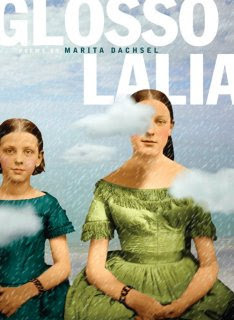 All while reading/thinking/writing her way into the poems that would become Glossolalia, her second collection (Anvil Press, 2013).
All while reading/thinking/writing her way into the poems that would become Glossolalia, her second collection (Anvil Press, 2013).
1) What do you want people to know about Glossolalia?
Other than what’s written on the back of the book, I’d like people to know that it’s a work of the imagination, but based on research. That doesn’t sound very exciting though, does it? There’s a bit of sex in there, too. Everyone likes sex, right?
2) Have you ever been to Winnipeg? What have you heard?
Unfortunately, I have not yet made it Winnipeg, though I hope to soon. I had a fantasy a few years ago that I’d move there. In my imagination, it is a magical place, reminiscent of the great American cities—Detroit, Philadelphia, Pittsburg. Gritty and working class, but rich with history, culture, and diversity. I’m also a huge fan of Guy Madden, so of course my Winnipeg is also black and white, everyone dresses as if in the 20s or 30s, and it’s full of Icelanders and sexual deviants.
3) As a writer (i.e. someone whose artistic practice is predicated on time spent alone) how do you approach performance? What do you get out of it?
I used to not like doing readings at all, but I’ve grown to really enjoy them, at least once I’m up there on stage. I’m still a mess of nerves beforehand. When I was at the Writing Studio in Banff a few years ago, I was fortunate to work with the late Colin Bernhardt. He was incredibly inspiring and taught me so much about voice, performance, and reading. I have his photocopies of warm-ups and in my ideal world, the hour before a reading, I am alone and working through the exercises. They ground and focus me. I like to have time to calm myself beforehand, but that’s not always in the cards.
If I do well, I get a rush, an endorphin hit that’s always nice, but truly the best thing about readings is connecting with other writers and readers. I love to see how others react to the work, how they connect to it, and participating in the ensuing discussion. It’s so rewarding.
4) What are you reading right now? What are you writing right now?
Right now I’m reading Jan Zwicky’s Forge, and am slowly working through Marilynne Robinson’s essay collection When I Was a Child I Read Books. I’m about halfway through Emily Perkin’s The Forrests, but will start Saleema Nawaz’s Bread and Bone as soon as I can get myself to a bookstore.
My writing is quite sporadic at the moment. I had worked on Glossolalia for six years and it’s strange not to have a project. I’m writing ideas towards poems and essays, but I don’t have a specific project on the go. I’m untethered—it’s both liberating and terrifying, so a good place to be.
5) So you’re an agnostic feminist poet married to a playwright. Why is polygamy in the context of what could be termed a religious sect so fascinating for you? Put another way, why is belonging so alluring?
I grew up in a small family. Both my parents emigrated to Canada as adults, so other than my sister and my parents, I had no family in North America. My mother would tell me stories about her large extended family growing up and it felt like I was missing out on something. From the outside, large families always seemed so joyful, so rewarding.
I don’t belong to an organized religion, but there are times I wish that I had that kind of faith. I can’t think of anything more comforting than being surrounded by a network of people who share your beliefs and values, who care and love you—family on a larger scale.
Mormon polygamy is the section in the Venn diagram of belonging to family, faith and community. It’s all three. A large part of their doctrine concerns the everlasting family, so you have these large families where you could be one of dozens and dozens of siblings, which sounds to me like a wonderful way to grow up. You live in communities of like-minded folk.
Now, of course, this is the idealized version of it. The reality of the situation is much different, as we all know that families can me messy, that homogeneous communities can be dangerous, that faith can be complicated, but that still doesn’t stop me from idealizing what it could be.
Over the past six years, she has 1) moved house from Vancouver to Edmonton to Vancouver to Victoria; 2) published her first trade collection All Things Said and Done (Caitlin Press, 2007) as well as the chapbook Eliza Roxcy Snow (Red Nettle Press, 2009); and 3) written Electric Company: Initiation Trilogy, three theatrical installations based on poetry collections by Marita, Elizabeth Bachinsky, and Jennica Harper that was performed at the 2012 Vancouver Writers Fest.
 All while reading/thinking/writing her way into the poems that would become Glossolalia, her second collection (Anvil Press, 2013).
All while reading/thinking/writing her way into the poems that would become Glossolalia, her second collection (Anvil Press, 2013). 1) What do you want people to know about Glossolalia?
Other than what’s written on the back of the book, I’d like people to know that it’s a work of the imagination, but based on research. That doesn’t sound very exciting though, does it? There’s a bit of sex in there, too. Everyone likes sex, right?
2) Have you ever been to Winnipeg? What have you heard?
Unfortunately, I have not yet made it Winnipeg, though I hope to soon. I had a fantasy a few years ago that I’d move there. In my imagination, it is a magical place, reminiscent of the great American cities—Detroit, Philadelphia, Pittsburg. Gritty and working class, but rich with history, culture, and diversity. I’m also a huge fan of Guy Madden, so of course my Winnipeg is also black and white, everyone dresses as if in the 20s or 30s, and it’s full of Icelanders and sexual deviants.
3) As a writer (i.e. someone whose artistic practice is predicated on time spent alone) how do you approach performance? What do you get out of it?
I used to not like doing readings at all, but I’ve grown to really enjoy them, at least once I’m up there on stage. I’m still a mess of nerves beforehand. When I was at the Writing Studio in Banff a few years ago, I was fortunate to work with the late Colin Bernhardt. He was incredibly inspiring and taught me so much about voice, performance, and reading. I have his photocopies of warm-ups and in my ideal world, the hour before a reading, I am alone and working through the exercises. They ground and focus me. I like to have time to calm myself beforehand, but that’s not always in the cards.
If I do well, I get a rush, an endorphin hit that’s always nice, but truly the best thing about readings is connecting with other writers and readers. I love to see how others react to the work, how they connect to it, and participating in the ensuing discussion. It’s so rewarding.
4) What are you reading right now? What are you writing right now?
Right now I’m reading Jan Zwicky’s Forge, and am slowly working through Marilynne Robinson’s essay collection When I Was a Child I Read Books. I’m about halfway through Emily Perkin’s The Forrests, but will start Saleema Nawaz’s Bread and Bone as soon as I can get myself to a bookstore.
My writing is quite sporadic at the moment. I had worked on Glossolalia for six years and it’s strange not to have a project. I’m writing ideas towards poems and essays, but I don’t have a specific project on the go. I’m untethered—it’s both liberating and terrifying, so a good place to be.
5) So you’re an agnostic feminist poet married to a playwright. Why is polygamy in the context of what could be termed a religious sect so fascinating for you? Put another way, why is belonging so alluring?
I grew up in a small family. Both my parents emigrated to Canada as adults, so other than my sister and my parents, I had no family in North America. My mother would tell me stories about her large extended family growing up and it felt like I was missing out on something. From the outside, large families always seemed so joyful, so rewarding.
I don’t belong to an organized religion, but there are times I wish that I had that kind of faith. I can’t think of anything more comforting than being surrounded by a network of people who share your beliefs and values, who care and love you—family on a larger scale.
Mormon polygamy is the section in the Venn diagram of belonging to family, faith and community. It’s all three. A large part of their doctrine concerns the everlasting family, so you have these large families where you could be one of dozens and dozens of siblings, which sounds to me like a wonderful way to grow up. You live in communities of like-minded folk.
Now, of course, this is the idealized version of it. The reality of the situation is much different, as we all know that families can me messy, that homogeneous communities can be dangerous, that faith can be complicated, but that still doesn’t stop me from idealizing what it could be.
Published on May 04, 2013 12:33

